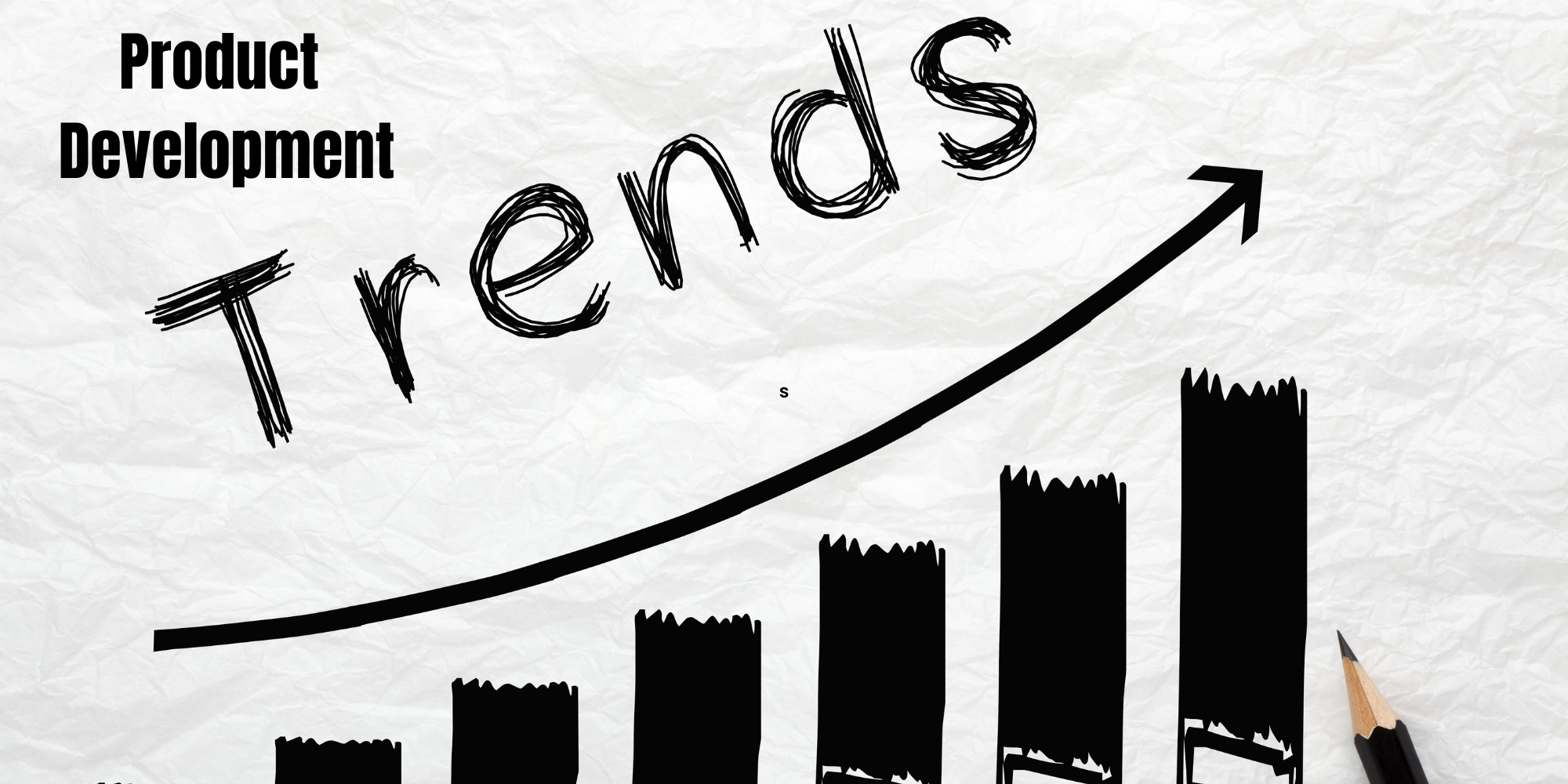As we move closer to 2025, advancements in technology and shifting consumer preferences are redefining product development. Companies must stay ahead by adopting trends that focus on efficiency, sustainability, and customer personalization. Here are the major product development trends projected for 2025:

1. AI-Driven Automation: -one of the main product development trends
Artificial Intelligence (AI) and Machine Learning (ML) will revolutionize product development by automating many processes. These technologies will streamline the design, prototyping, and testing phases, leading to faster and more efficient product creation. AI will enable products to evolve and personalize in real-time based on user input, significantly improving user experience.
AI adoption by organizations is set to expand at a CAGR of 36.6% between 2024 and 2030.
2. Eco-Friendly and Circular Design
In 2025, sustainability will dominate product design. Companies will increasingly adopt circular economy practices, creating products that can be reused or recycled. By incorporating sustainable materials and energy-efficient production, businesses will minimize waste and reduce their environmental impact, responding to consumer demand for eco-friendly solutions.
3. Virtual Prototyping with Digital Twins
Digital twins—virtual representations of physical products—will allow companies to test and refine designs in a digital space before creating physical prototypes. This will dramatically reduce the cost and time involved in product development, particularly in industries like automotive, healthcare, and consumer goods.
The digital twin market is expected to grow at a significant rate in the coming years, with some estimates projecting a 39.8% compound annual growth rate (CAGR).
4. Personalized Products with Data-Driven Insights
With advancements in AI and data analytics, hyper-personalization will become a key focus. By analyzing customer data, companies can develop customized products tailored to individual preferences, enhancing customer satisfaction and building stronger brand loyalty.
5. The Impact of 5G
The rollout of 5G networks will transform how connected products are developed and used. With faster data transmission and lower latency, companies will create more responsive and immersive IoT devices, AR/VR applications, and autonomous systems. This will significantly enhance the functionality of products across various industries, including smart homes and healthcare.
By 2025, 5G networks are likely to cover one-third of the world’s population.
6. Democratizing Development with Low-Code Tools
Low-code/no-code platforms will enable more people within organizations to contribute to product development. These tools will allow non-technical users to build digital solutions without needing extensive coding skills, fostering creativity and speeding up development cycles.
7. AR/VR in Product Design
Augmented Reality (AR) and Virtual Reality (VR) will play a pivotal role in product design by allowing teams to simulate and interact with products. These technologies streamline the development process by reducing the need for physical models, speeding up iterations, and enhancing collaboration across distributed teams. As AR and VR become more accessible and integrated into design workflows, they are reshaping how products are conceptualized, tested, and brought to market.
8. Remote Collaboration
By 2025, the trend toward remote and hybrid teams will continue, driven by digital tools that enable seamless collaboration across geographies. Platforms such as Slack, Figma, and Jira will support real-time teamwork, enabling product development to occur from anywhere while accessing diverse global talent.
9. Ethical Product Design
In 2025, there will be a greater emphasis on ethical product development. Companies will focus on creating inclusive products that avoid biases, prioritize accessibility, and respect data privacy. This focus on ethics will enhance the social impact of products, fostering trust and responsibility.
Conclusion
The product development landscape in 2025 will be characterized by rapid technological advancements, eco-conscious design, and a customer-centric approach. Companies that harness AI, 5G, and digital twin technology will lead innovation, while low-code tools and remote work practices will democratize product creation. Sustainability and ethics will also take center stage, ensuring that products not only succeed in the market but also contribute to a better, more inclusive future.
For more information on how our AI solutions can benefit your business, visit us at Appoctet or get in touch with us at 9888190080 or info@appoctet.com. Let’s build the future together!